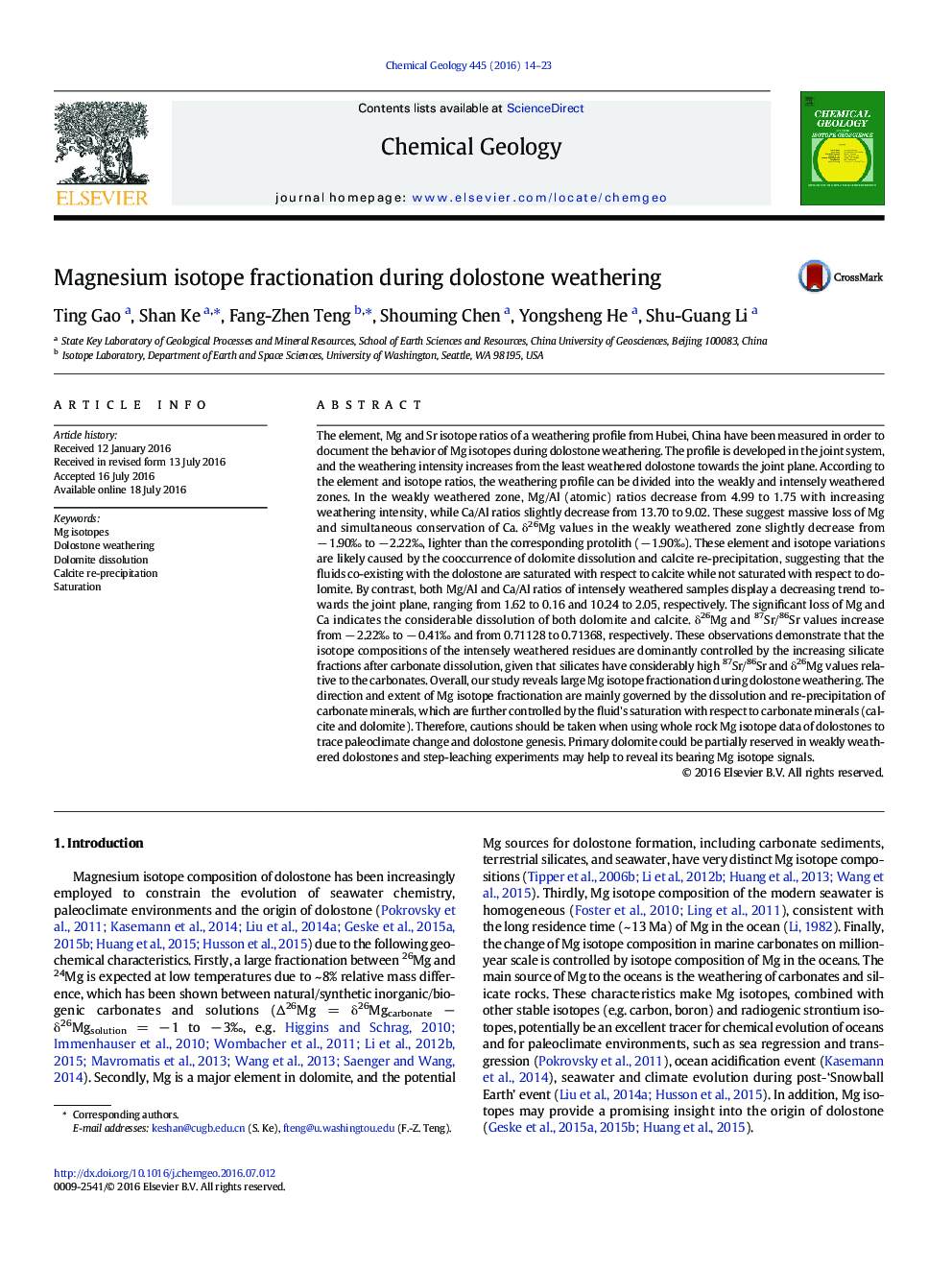| کد مقاله | کد نشریه | سال انتشار | مقاله انگلیسی | نسخه تمام متن |
|---|---|---|---|---|
| 4698148 | 1637529 | 2016 | 10 صفحه PDF | دانلود رایگان |
The element, Mg and Sr isotope ratios of a weathering profile from Hubei, China have been measured in order to document the behavior of Mg isotopes during dolostone weathering. The profile is developed in the joint system, and the weathering intensity increases from the least weathered dolostone towards the joint plane. According to the element and isotope ratios, the weathering profile can be divided into the weakly and intensely weathered zones. In the weakly weathered zone, Mg/Al (atomic) ratios decrease from 4.99 to 1.75 with increasing weathering intensity, while Ca/Al ratios slightly decrease from 13.70 to 9.02. These suggest massive loss of Mg and simultaneous conservation of Ca. δ26Mg values in the weakly weathered zone slightly decrease from − 1.90‰ to − 2.22‰, lighter than the corresponding protolith (− 1.90‰). These element and isotope variations are likely caused by the cooccurrence of dolomite dissolution and calcite re-precipitation, suggesting that the fluids co-existing with the dolostone are saturated with respect to calcite while not saturated with respect to dolomite. By contrast, both Mg/Al and Ca/Al ratios of intensely weathered samples display a decreasing trend towards the joint plane, ranging from 1.62 to 0.16 and 10.24 to 2.05, respectively. The significant loss of Mg and Ca indicates the considerable dissolution of both dolomite and calcite. δ26Mg and 87Sr/86Sr values increase from − 2.22‰ to − 0.41‰ and from 0.71128 to 0.71368, respectively. These observations demonstrate that the isotope compositions of the intensely weathered residues are dominantly controlled by the increasing silicate fractions after carbonate dissolution, given that silicates have considerably high 87Sr/86Sr and δ26Mg values relative to the carbonates. Overall, our study reveals large Mg isotope fractionation during dolostone weathering. The direction and extent of Mg isotope fractionation are mainly governed by the dissolution and re-precipitation of carbonate minerals, which are further controlled by the fluid's saturation with respect to carbonate minerals (calcite and dolomite). Therefore, cautions should be taken when using whole rock Mg isotope data of dolostones to trace paleoclimate change and dolostone genesis. Primary dolomite could be partially reserved in weakly weathered dolostones and step-leaching experiments may help to reveal its bearing Mg isotope signals.
Journal: Chemical Geology - Volume 445, 16 December 2016, Pages 14–23
